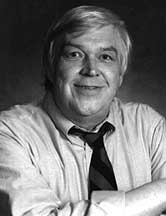Brief History of Media Education, A
|
|
"How did we get here?" It's not just a question for those who are lost. Some think that we can better understand where we are today by looking at where we've been. With that idea in mind, I thought I would offer a short history of media education.
Media education can be divided into four distinct historical periods.
They are not difficult to remember, because the first one ran from about the year 0 until about the 1960's. The methodology was simple: educators ignored the media.
Even as late as the 1960's, when coffeehouses and folk music were all around, English teachers blithely delved into the study of ancient English madrigals with nary a mention of current troubadours. Students studied ancient Greek myths while Walt Disney was busy creating American myths of Davy Crockett or popularizing uniquely American fables. Even newspapers were not only ignored, but actually confiscated if a student had the audacity to bring them to class. Books were the only medium worth time and effort. And REAL books -- not those trashy paperbacks, either. English teachers taught books; music teachers taught classical music; history teachers taught ancient history in a way indistinguishable from teachers 500 years earlier.
When it became clear that popular mass media would not just wither and disappear, media education entered its second phase -- the inoculation phase. Just as your doctor would inject your body with the dead germs of some troublesome disease in order to protect your metabolism, teachers injected mass media into their courses to show how empty, silly, and value-less it was. It was an attempt to inoculate or protect students from the dangerous germs of current media culture. But they only injected dead or silly or stupid media messages -- it was easier to make fun of them that way.
You may remember Arthur Treacher on the Merv Griffin show reciting the lyrics to some rock and roll song with his uniquely upper-class British accent. He would, of course, choose songs like "Get A Job" (where the lyrics were "Sha-na-na-na. Yip. Yip. Yip") or "Da Do Ron Ron" to make the whole thing even funnier. Film study usually consisted of showing clips of a rebellious Marlon Brando or James Dean, with the inevitable message that the popular media were turning out a generation of delinquents. The term "multi-media" meant that your teacher would accept maybe a chart as part of your written report. But no pictures.
Making fun of the popular media and trying to point out how worthless it was didn't help, so the third phase tried to use the popular media as an enticement to get kids into areas really worthy of study. This was called the "suck them in" approach. "OK, class. Now that we've heard a song from Bob Dylan, a popular folk singer, let's see what other people did with the folk genre. Turn to page 222 for a discussion of ancient English madrigals."
Or they showed a clip from "West Side Story" just before they had you read "Romeo and Juliet," figuring that watching five minutes of the Sharks and the Jets would excite you enough for a five month study of Shakespeare and make it relevant. The study of current events was begun in social studies and students were allowed (if not encouraged) to actually read newspapers (but only for the news, not for the comics or sports or anything entertaining).
All of this happened in the space of about 20 years. Actually, in many places, it's still going on.
Media education today is in transition. We are beginning to realize that while "West Side Story" and "Romeo and Juliet" may have similar themes, each deals with the theme in different ways, in different times, with different storytelling techniques. Each is worthy of a closer study. And while a dramatic reading of rock lyrics as poetry is still an effective comedy routine, we understand today that lyrics are NOT poetry -- they are lyrics, a different medium.
We are beginning to realize that most Americans are not getting their information from books or even newspapers, but from television. And we're beginning to understand that wishing it were not so or ignoring the fact won't make it go away. We are moving education about the media into at least the 20th (if not the 21st) century, and teaching students about and with the media they know and use every day.
It is a difficult struggle, because there are still those who choose to ignore it, make fun of it, or use it to suck students in to a study of something else entirely. And we need to do media education while we continue to teach other, more traditional subjects, too (although perhaps we could spend just a LITTLE less time on English madrigals).



